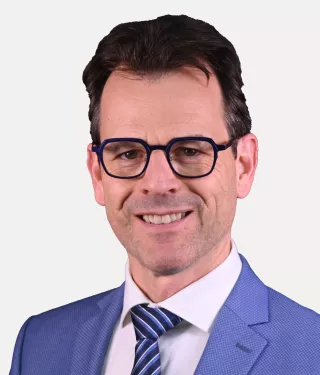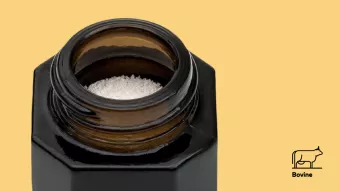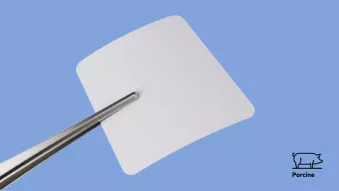
Horizontal GBR in the posterior mandible, using the L-prf bone block protocol
Dr. Stefan Matthijs, Periodontist
Belgium
Patient: 57-year-old female, no systemic diseases, no oral pathologies
Clinical situation: Tooth 46 (FDI) was removed 8 months earlier. Missing lower molars 46 and 47. Reduced masticatory function. Horizontal bone deficiency and reduced soft tissue volume.
Surgical planning: Horizontal bone regeneration, prior to implant placement.
A mixture of small and large size Nobel Biocare creos™ xenogain granules and L-prf was used to create a soft bone block. The bone substitute was covered by a Nobel Biocare creos™ xenoprotect resorbable membrane and L-prf membranes. No pins were used to stabilize the membrane. The need for soft tissue augmentation was evaluated at a later timepoint.
Prosthetic planning:
Individual screw retained crowns on implants
Chronology of the treatments:
27th of April 2017: Guided bone regeneration
10th of November 2017: Implant placement
25th of January 2018: Evaluation of the integration – start of the prosthetic treatment
9th of August 2018: First clinical and radiological evaluation of the final reconstruction
24th of October 2022: Clinical and radiological evaluation during the yearly supportive implant care visit.
Total treatment time:
10 months - 5-year follow-up
Tooth position:
Right lower molars, 46 and 47
References
- Leucocyte- and platelet-rich fibrin block for bone augmentation procedure: A proof-of-concept study. Cortellini et al., J Clin Periodontol,2018;45:624–634.
- Individual “alveolar phenotype” limits dimensions of lateral bone augmentation. Quirynen et al., J Clin Periodontol,2023,50:500-510. Leukocyte- and Platelet-Rich Fibrin in Oral Regenerative Procedures.
- Quirynen M. & Pinto N.R., 2022, Handbook, Quintessence Publishing, UK.
-
 NobelParallel™ Conical Connection
NobelParallel™ Conical ConnectionA simply straightforward implant system.
Exceptional versatility for universal use. -
 creos™ xenogain
creos™ xenogain3 methods of application to meet all your bone grafting needs.
-
 creos™ xenoprotect
creos™ xenoprotectA membrane with outstanding handling that facilitates bone gain.
Sign up for our blog update
Get the latest clinical cases, industry news, product information and more.
© Nobel Biocare Services AG, 2024. All rights reserved. Nobel Biocare, the Nobel Biocare logotype and all other trademarks are, if nothing else is stated or is evident from the context in a certain case, trademarks of Nobel Biocare. Please refer to nobelbiocare.com/trademarks for more information. Product images are not necessarily to scale. Disclaimer: Some products may not be regulatory cleared/released for sale in all markets. Please contact the local Nobel Biocare sales office for current product assortment and availability. For prescription use only. Caution: Federal (United States) law restricts this device to sale by or on the order of a licensed clinician, medical professional or physician. See Instructions For Use for full prescribing information, including indications, contraindications, warnings and precautions. Nobel Biocare does not take any liability for any injury or damage to any person or property arising from the use of this clinical case. This clinical case is not intended to recommend any measures, techniques, procedures or products, or give advice, and is not a substitute for medical training or your own clinical judgement as a healthcare professional. Viewers should never disregard professional medical advice or delay seeking medical treatment because of something they have seen in this clinical case. Full procedure is not shown. Certain sequences have been cut. Dr. Tabanella is a paid consultant for Nobel Biocare. The opinions expressed are those of the doctor. Nobel Biocare is a medical device manufacturer and does not dispense medical advice. Clinicians should use their own professional judgment in treating their patients. Individual patient results may vary.





















